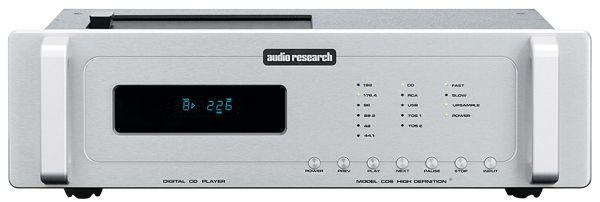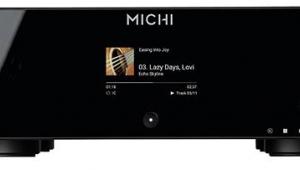Audio Research Cd6 (£8050)

Producing a solid-state version of a valve CD player is nothing new for the Minnesota-based company, although, for many, ‘Audio Research’ means valves. But at least the CD6 can be sited in a cabinet or other enclosure with doors, whereas the REF9 CD player/DAC [HFN May ’13] needs ventilation.
Both players confront the current need for a plethora of digital inputs and sampling rates with a full complement. The CD6’s four digital inputs comprise asynchronous USB 2.0 (ARC supplies a CD with the drivers for Windows and Mac), coaxial RCA, and Toslink. Although all inputs offer 192kHz/24-bit resolution certain settings are proscribed, yet there is ample freedom in what rates you opt to use with each source, for fine-tuning the sound. Upsampling to 174.6/192kHz may be switched off. Another option is the choice between ‘Fast’ and ‘Slow’ digital filters, the latter better suited to 96kHz+ digital inputs.
For CD playback ARC has fitted the Philips PRO2R transport with access through a sliding door on the top, and the CD held in place by a magnetic puck. Enjoying trickle-down technology from the REF DAC and REF CD9, the CD6 employs quad 24-bit DACs running in mono mode, with dual master oscillators. One clock circuit handles 44.1/88.2/176.4kHz sample rates, the other 48/96/192kHz.
The fascia has a dimmable display on the left side, revealing CD replay data, while three vertical LED displays indicate sample rates, the input selected and (extreme right) ‘Fast-Slow-Upsample-Power’. Below these are buttons for Power, Previous, Play, Next, Pause, Stop and Input. More extensive control can be found via the supplied all-metal IR remote handset.
'Analogue’ resolve
For auditioning we used Audio Research REF75 and D’Agostino Momentum Stereo amps, both fed by a ARC REF5SE preamplifier, taking turns driving Wilson Alexias. What was revealed with no uncertainty was that the CD6’s purported ability to tame a lush system proved to be a boon.
We experimented with the settings and found that they even had their use with different CDs, and certainly with the music fed by computer. On She & Him, Volume One [Domino], going from CD to download, and varying the upsampling could rob Zooey Deschanel’s voice of a certain liquid character, or turn it sibilant. Tweakers will have a field day with these various settings…
With Elvis – The Movie Soundtracks [RCA/Sony Music, 20CDs] it was the ‘redneck’ slap bass on ‘Return To Sender’ from Girls! Girls! Girls! that made the hairs stand up. The snap was precise, authentic, just like a live gig. It flowed, and maintained a level of substance and mass that proved irresistible.
We then played the same material through the USB input at two different levels of download. CD simply sounded more visceral and convincing, USB a bit indistinct and grainy.
So we turned to Caravan’s recent Paradise Filter [Caravan Records] for its complexity and modernity. The title track is a wash of ethereal textures that will charm the faithful, as prog-rocky as one would anticipate. If ever a band created ‘soundscapes’, it is Caravan and the CD6 did its Capability Brown schtick with aplomb.
‘The Paradise Filter’ elicits analogies of a fabric-like nature, gentle vocals, sweeping keyboards – then an interlude of tearing guitar, wispy flute and solid percussion. It’s a challenge the CD6 resolved in a most ‘analogue’ fashion. The lateral spread was seamless, nothing jarred, it all coalesced. We were reminded of the CD9, one of the finest-sounding CD players we’ve used. But here’s a £4k price cut – and all you lose is a hint of warmth.
Verdict
This really is a ‘poor man’s REF CD9’, though ‘poor’ a relative term. The main sonic differences are a sharper top-end, which could tighten the sound of a soft system (eg, using all tubes, or vintage kit), followed by a slight hygienic thinness that continues through the midband. That aside, we could live with this honey forever.
Originally published in the 2014 Yearbook



















































